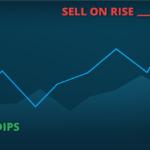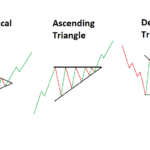The economic and financial implications of a global pandemic are usually far-reaching and difficult to gauge without the historical lense of hindsight. COVID-19 is no exception, but it is already clear that some lockdown aftereffects are being welcomed by more than a few.
Cleaner air is the result of fewer vehicles in the air and on the roads; a placid downscaling of the daily rhythm agrees with most people at riskThe level of deviation of past returns and/or losses on an asset from the mean. Usually, the higher ... due to their age, and financial markets – though in disarray and branded with the cynical Main street / Wall streetA street in Lower Manhattan that runs along the original route of the wall surrounding historical Ne... disconnect – have now discovered a small blessing in the relaxing of some regulatory limitations; though these may be a temporary backstop to help alleviate the pressures.
ESMA Updates MiFID-2

Towards the end of July, the European Union’s financial markets & services regulating body, the European Securities & Markets Authority (ESMA), tabled a set of adjustments to its 2018 MiFID-2 (Markets in Financial Instruments Directive, no. 2) directive – an update of its MiFID-1 directive from 2007.
Whereas MiFID-1 aimed at unifying equity markets throughout the Union, MiFID-2 took under its sweep the derivatives and over-the-counter (OTC) marketA location or entity where people and entities can negotiate and trade assets of value., as well.
In order to foster greater transparency and objectivity, one of its instructions was the separation of the trading and research activities of brokerages. As a result, brokers began ignoring less equitable products for whose research they would otherwise have had to pay.
Now, at a time when the European economy cannot afford small and medium-sized enterprises from being ignored by investors, the regulator has decided to relax these rules in order to ease the capital-raising activities of such firms.
To this end, they will enable them to form a simplified “growth & recovery prospectus” with which they will then be able to raise capital on the equities market, and the research and trading unbundling directive will be amended with regards to SMEs and fixed-income instruments.
Markets in Financial Duress – a Recap
One may say that the entire history of financial regulation is one of putting out fires. And since financial trading is a zero-sum gameA game or game-like activity in which one participant's gain can only be at the expense of another's... (one person’s loss is another person’s gain), that history shows a series of growing curbs on the greed of the latter and the susceptibility of the former.

Perhaps one of the first instances of financial regulation is King Edward I’s 13th-century requirement that money brokers be licensed, resulting in the subordination of those arranging loans to the whims of those requiring them (the loaner, i.e. the King).
The first instance of MARKET regulation came 300 years later when former board members of the Dutch East India Company began short-trading their stocks, resulting in an edict banning short selling.
In 2007, online trading was in its diapers. The potential influx of potential independent investors into equities was being hindered by disparate markets throughout the European Union and high trading costs, insofar as shares were concerned. Unfortunately, a year later, financial markets collapsed, in no small part due to what is referred to as ‘regulatory capture’.
The Shortcomings of Influence
Financial regulators are tasked with supervising companies listed on stock exchanges to prevent fraud, investmentAn asset (usually money or work) provided to another in expectation of receiving a cash return or be... managers and brokers to ensure transparency and fair execution of orders, and finally exchanges to ensure transparent pricing and proper trade execution. Unfortunately, these regulators are human and thus prone to human contact with those they are meant to regulate.
Thus, in returnThe benefit one receives on an investment. for the promise of future, more lucrative jobs, the CFTC at the start of the Millenium turned a blind eye to the misbehaviour of Enron, Goldman Sachs and other investment banks.

And five years later, the world exploded when the head of the US Federal Reserve protected banks, funds and major ratings firms as they pursued those strategies that led to the financial cataclysm that those same regulators then bailed them out from – then refusing to prosecute cases of flagrant violations of accepted rules and practices, once again, allegedly in return for future jobs.
The prime culprits of 2008 used a host of financial instruments to perpetrate their crimes – most of the derivatives that had been slowly making their way into the prime markets since their invention and repeated misuse hundreds of years ago.
Sub-prime mortgages were being bundled into packaged products that were then falsely rated by Moodys and others, investment bankers shorted their own customers, and so forth.
And thus arose the need for MiFID-2.
Addressing the Undressed
MiFID-2 covers all 27 states who are members of the Treaty and for now includes the UK, as well. It affects all financial services companies, both within the EU and those outside but doing business with an EU registered entity. It applies to any company registered in one EU state that can then, through the passporting agreements, operate in all others.
In 2017, the new regiment both widened the scope of ESMA’s purveyance, but also levelled the playing field amongst all financial players – all in an attempt to increase investor confidence in a post-fraud financial world.

By recognising the prominence of derivatives contracts, such as options, futures and CFDs, it agreed to regulate, not only the exchange-ruled world but the off-exchange Over the Counter realm that enables the instituting of contracts directly between buyer and seller.
An example of field levelling is the requirement to report on each trade using a 50-field regime. Meant to draw market participants away from the time-tested telephone instruction towards more precise electronic platforms, the purpose here is better auditing on the part of the regulator; the result is tilting the field in favour of the (mostly) newer online brokers who already had the technology in place to fulfil such a Heraclean task.
The directive distinguishes between professional and retail traders, providing negative balance protection, limiting leverageAn investment provided by a broker or other provider alongside an investor’s investment, enabling ... and other risk elements, and – to prevent fraud – instituted anti-money laundering requirements that a brokerA 3rd party that negotiates a transaction between 2 other parties – a buyer and a seller. identifies the character and personage behind client activities.
Finally, it also required client your monies be separated from a firm’s running expenses in order to prevent client losses in case of brokerage liquidation.
And, finally, MiFID-2 required fund managers to pay brokers separately for trading services and research – this in order to increase transparency and eliminate conflicts of interestThe cost of accessing money not owned. (by slanting the research in favour of assets held by a market makerA brokerage that retains sufficient liquidity in an asset to serve as a counterparty for trades on t..., for example). Now, of course, some of these requirements must be rethought in light of the current situation.
Clearly, regulation is an ongoing science.











